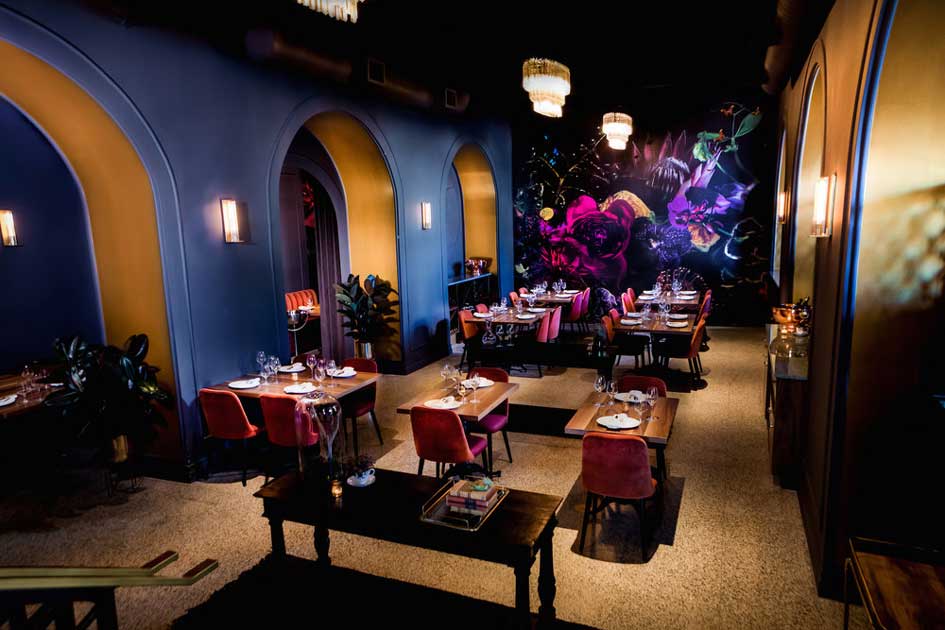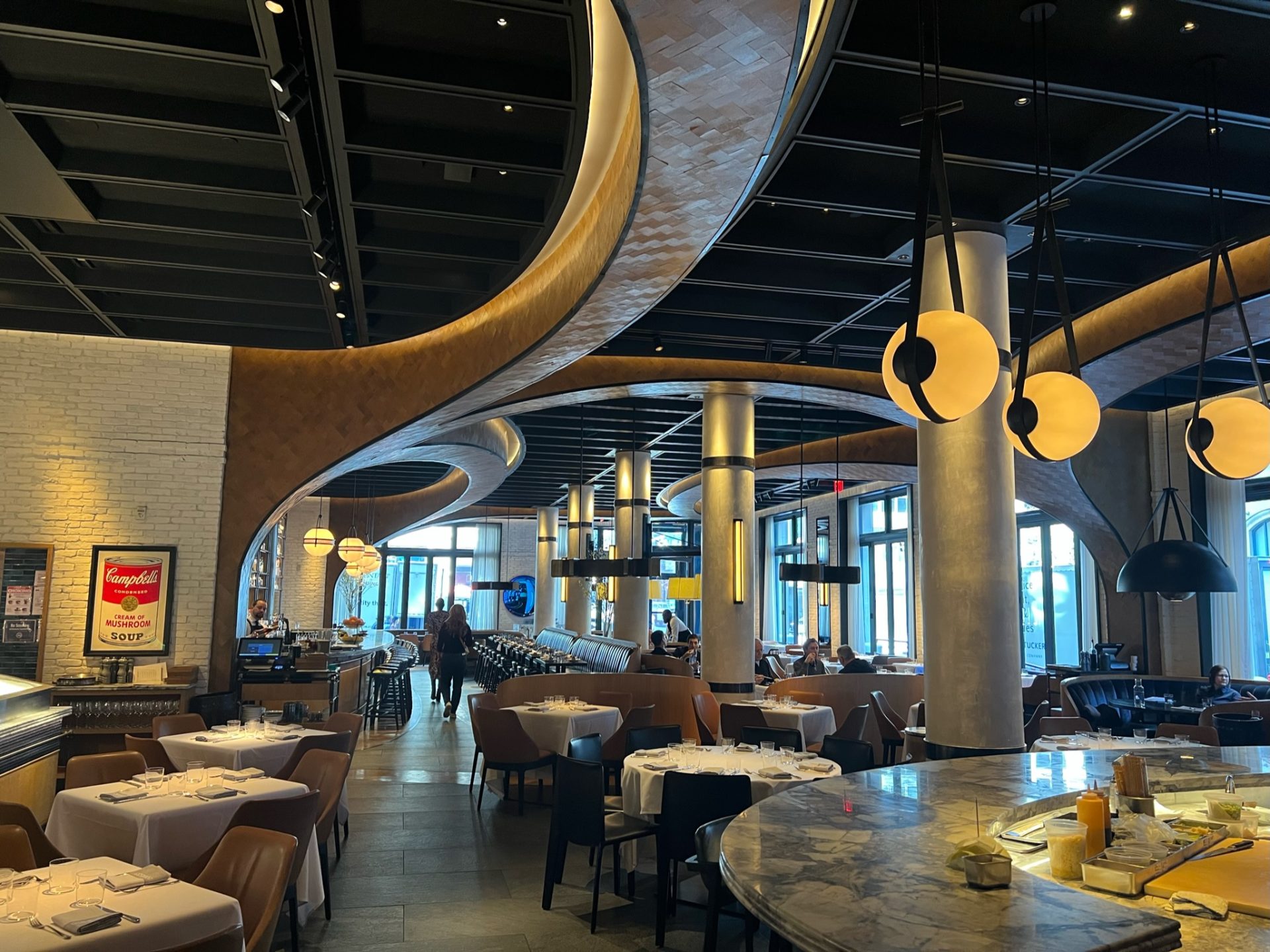Instagrammable Restaurants Islamabad: Picture-Perfect Dining Experiences
Instagrammable Restaurants Islamabad: Picture-Perfect Dining Experiences
Blog Article
Savor Authentic Asian Food With a Pan-Asian Twist for a Cooking Adventure
Embarking on a culinary trip with authentic Eastern food, improved with a Pan-Asian twist, offers a distinct chance to explore the abundant tapestry of flavors that define the area's diverse culinary traditions. As you consider these luring recipes, consider the social stories and historic influences that shape them, each bite offering a tale waiting to be found. pan asian dining Islamabad.

Checking Out Pan-Asian Flavors
In the world of worldwide gastronomy, Pan-Asian cuisine attracts attention for its exceptional variety and the unified interaction of flavors from various Eastern cultures. This culinary method commemorates the abundant practices and distinct components located throughout the continent, producing a tapestry of preferences that is both satisfying and appealing. Trick to Pan-Asian cuisine is its capacity to balance contrasting flavors-- sweet, salty, spicy, and sour-- while highlighting the freshness and high quality of each ingredient.
From the umami-rich soy sauce of Japan to the fiery chili peppers of Thailand, Pan-Asian cuisine supplies a comprehensive combination of flavors. These components are typically combined in creative means, improving meals with layers of complexity. For circumstances, the use of great smelling natural herbs such as lemongrass and cilantro, typical in Vietnamese and Thai cuisine, adds a rejuvenating brightness to recipes, while the unification of coconut milk provides a creamy, abundant texture.
The emphasis on fresh produce and fragrant seasonings ensures that each dish is not only a feast for the taste yet likewise for the senses. Pan-Asian food welcomes diners to start a cooking journey, checking out the large and varied landscapes of Eastern gastronomy with every bite.
Blend Meals to Attempt
While Pan-Asian cuisine is celebrated for its traditional tastes, the modern-day cooking landscape is increasingly embracing blend dishes that blend these timeless aspects with impacts from other regions. This innovative method not only honors the abundant heritage of Eastern culinary arts but also introduces novel preference experiences that attract modern palates.
An archetype of such a combination meal is the Korean-Mexican taco, where marinated bulgogi beef is covered in a cozy tortilla, covered with kimchi and a zesty gochujang-infused salsa. This mix weds the vibrant, tasty tastes of Korea with the vivid, fresh components of Mexican cuisine. Similarly, sushi burritos have actually obtained appeal, integrating the fragile virtuosity of Japanese sushi with the hearty, hand-held convenience of a burrito, usually featuring combination active ingredients like tempura shrimp and avocado with a drizzle of wasabi mayo.
An additional noteworthy dish is Thai curry ramen, which instills the luscious, fragrant flavors of Thai curry right into the comforting broth of conventional Japanese ramen, producing an unified mix that entices the senses. These blend meals extend past plain novelty; they stand for a cooking discussion between societies, encouraging expedition and technology in the globe of Pan-Asian food.
Vital Ingredients and Seasonings
To absolutely appreciate Pan-Asian food, one need to recognize the necessary components and flavors that develop its structure. This diverse cooking design attracts from an abundant tapestry of Eastern traditions, utilizing an unified mix of textures and tastes. Secret ingredients consist of soy sauce, fish sauce, and oyster sauce, which present hong kong chinese food a savory umami deepness important to Asian recipes. Corresponding to these are rice vinegar and mirin, offering a fragile acidity and sweet taste.
Fragrant aspects are pivotal, with al's pizza garlic, lemongrass, and ginger being common across different Pan-Asian recipes. These active ingredients supply an aromatic base that enhances the complexity of flavors. Seasonings such as star anise, cardamom, and cinnamon present warmth and personality, resembling influences from regions like China and India.

Food Preparation Strategies and Tips
Mastering the art of Pan-Asian cuisine requires experience with its distinctive food preparation strategies, each adding to the vibrant tapestry of tastes this culinary tradition is celebrated for. Central to these approaches is the stir-fry, a rapid cooking technique that preserves the nutritional stability and vibrant shades of ingredients. Using a frying pan, the stir-fry method permits also heat distribution, crucial for achieving the particular appearance and flavor equilibrium of Pan-Asian dishes.
Another basic technique is steaming, specifically widespread in Chinese cuisine. This mild approach preserves the all-natural tastes and nutrients of active ingredients, making it ideal for seafood and veggies. Dumplings, a cherished staple, typically gain from steaming, causing soft, delicious appearances.
Grilling, likewise important, imparts great smoky midsts to meals such as Korean bulgogi or Japanese yakitori (asian fusion restaurant). This method frequently involves marinading ingredients, allowing flavors to permeate deeply before cooking over an open fire or warm plate
Lastly, understanding the art of balancing flavors-- wonderful, sour, salty, bitter, and umami-- is crucial. Appropriately layering these components can boost a recipe from ordinary to remarkable, using a complicated and satisfying cooking experience that news personifies the significance of Pan-Asian cuisine.
Eating Experiences Worldwide
Throughout the world, Pan-Asian cuisine offers an unparalleled dining experience, celebrated for its rich tapestry of tastes and vibrant presentations. This cooking phenomenon has gone beyond cultural borders, recording the hearts and tastes buds of food enthusiasts worldwide. In worldwide cities fresh York, London, and Sydney, Pan-Asian dining establishments act as melting pots where cooking traditions from Thailand, Japan, China, and past assemble, offering diners with a diverse mix of meals that highlight the area's variety.
The international charm of Pan-Asian food depends on its ability to supply both authenticity and advancement. Chefs masterfully wed typical ingredients such as lemongrass, soy sauce, and miso with contemporary methods, causing dishes that are both refreshingly new and familiar. This fusion permits restaurants to start a culinary trip that respects heritage while accepting modernity.
Furthermore, dining experiences are elevated through thoughtfully developed atmospheres that reflect the principles of Pan-Asian aesthetic appeals. From minimal Japanese-inspired insides to lively Thai-themed areas, each dining establishment provides an one-of-a-kind atmosphere that enhances the culinary offerings. Therefore, clients are not merely taking in a meal but partaking in a social experience, making Pan-Asian eating a really worldwide phenomenon.
Final Thought
The exploration of Pan-Asian food uses a profound understanding of the detailed interaction of tastes and culinary practices throughout Asia. By accepting fusion dishes such as Thai curry ramen and sushi burritos, the cooking trip not only highlights the flexibility of standard ingredients but also showcases ingenious contemporary techniques. This gastronomic experience, improved by vital seasonings and cooking methods, provides a distinct possibility to appreciate the social diversity and cooking creativity that define Pan-Asian food on an international range.
Embarking on a culinary journey via genuine Oriental cuisine, enhanced with a Pan-Asian spin, uses a distinct possibility to explore the rich tapestry of flavors that define the region's varied culinary traditions.In the realm of global gastronomy, Pan-Asian food stands out for its exceptional diversity and the harmonious interplay of tastes from different Oriental societies. Key to Pan-Asian cuisine is its capability to stabilize different flavors-- wonderful, salted, spicy, and sour-- while highlighting the freshness and high quality of each ingredient.

Report this page